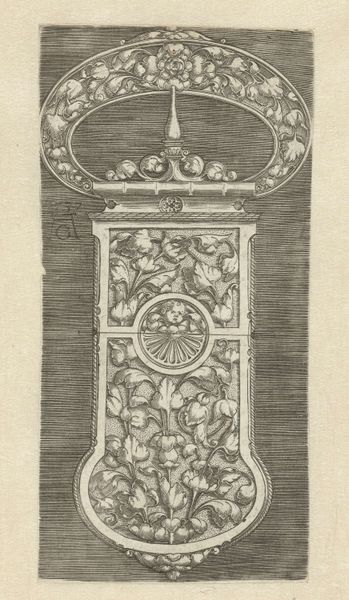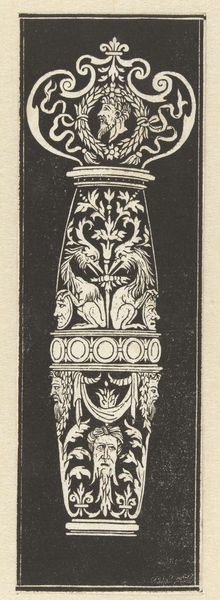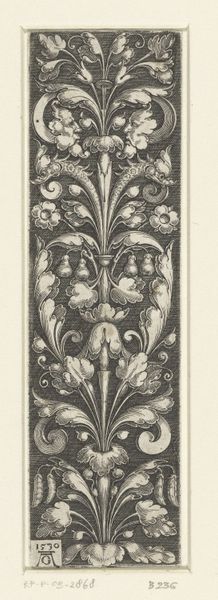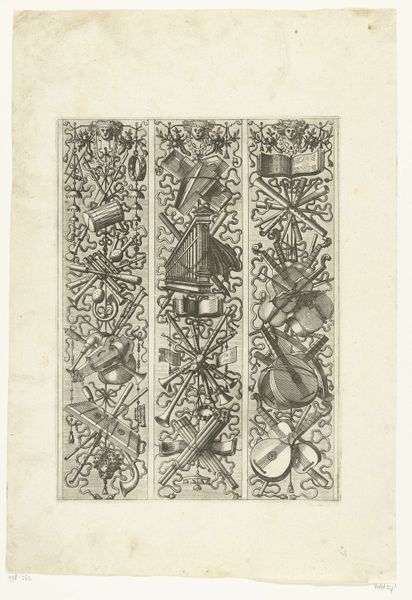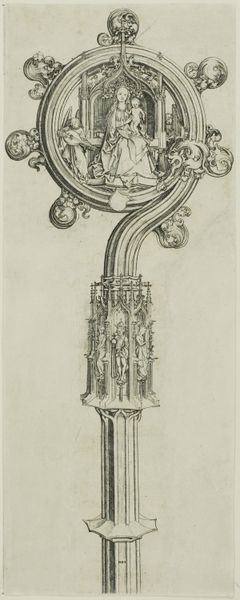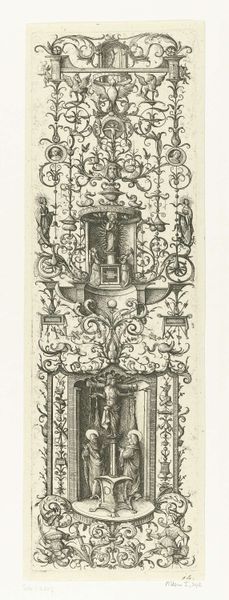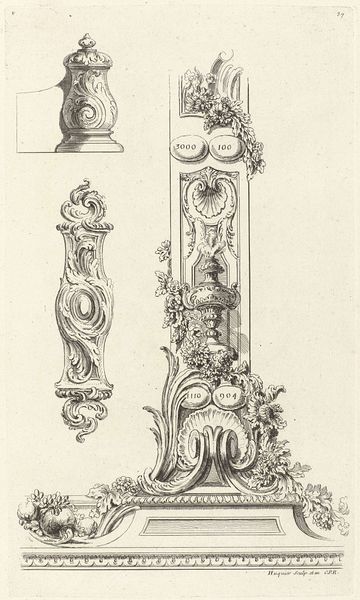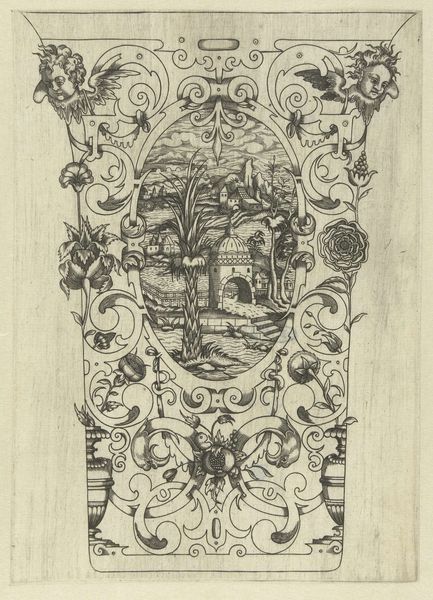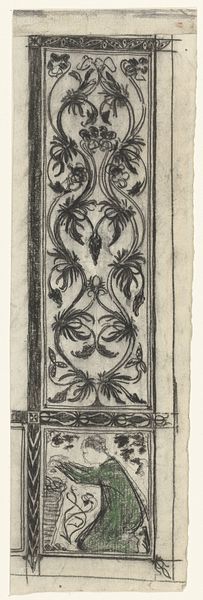
drawing, print, intaglio, engraving
#
drawing
#
pen drawing
# print
#
pen illustration
#
pen sketch
#
intaglio
#
old engraving style
#
11_renaissance
#
line
#
engraving
Dimensions: height 94 mm, width 53 mm
Copyright: Rijks Museum: Open Domain
Editor: So, this is "Ontwerp voor een gesp," or "Design for a Buckle," an anonymous engraving from sometime between 1500 and 1600. It's at the Rijksmuseum. I find the symmetry of the floral designs very pleasing, yet I also sense a certain rigidity. What catches your eye when you look at this piece? Curator: What strikes me is how this ornamental design speaks to a particular moment in history, a moment of transition and negotiation of power. The buckle, ostensibly a functional object, becomes a site of immense cultural significance. Look closely at the intertwined flora. What do you see beyond mere decoration? Editor: I see leaves and some round shapes that I guess are berries, all within this very formal structure. It seems intended to be beautiful, but also, as you suggest, symbolic. Curator: Precisely! These botanical motifs weren't just randomly chosen. They often carried coded meanings related to status, identity, and even nascent political allegiances. Imagine the wearer. Who were they? How might this buckle, with its specific iconography, have been used to project a certain image of themselves? Was it about wealth, power, lineage, or perhaps even rebellion against established norms through subversive symbolism? Consider also how sumptuary laws of the time regulated who could wear what, turning clothing and accessories into powerful signifiers of social standing. Editor: So the buckle becomes more than just a fastener. It’s a statement? Curator: Exactly. By analyzing these details through a contemporary lens, we can unravel the complex tapestry of social and political dynamics embedded within this seemingly simple design. The intaglio printing allowed the widespread dissemination of designs, influencing fashion and the visual culture. Considering this access allows us to explore the development of societal roles in relation to gender. The design's display turns a personal item into an identifier, questioning individual intentions within cultural and social constraints. What’s the value in creating more accessible designs? Editor: I hadn't considered all the different social levels and genders interacting and putting meaning into daily life via things like buckles. Curator: And isn't it fascinating how much we can glean from such a small, unassuming object? It underscores the power of art and design as reflections of our shared history and evolving identities.
Comments
No comments
Be the first to comment and join the conversation on the ultimate creative platform.
